How to Successfully Implement Population Health Management Software in Your Practice

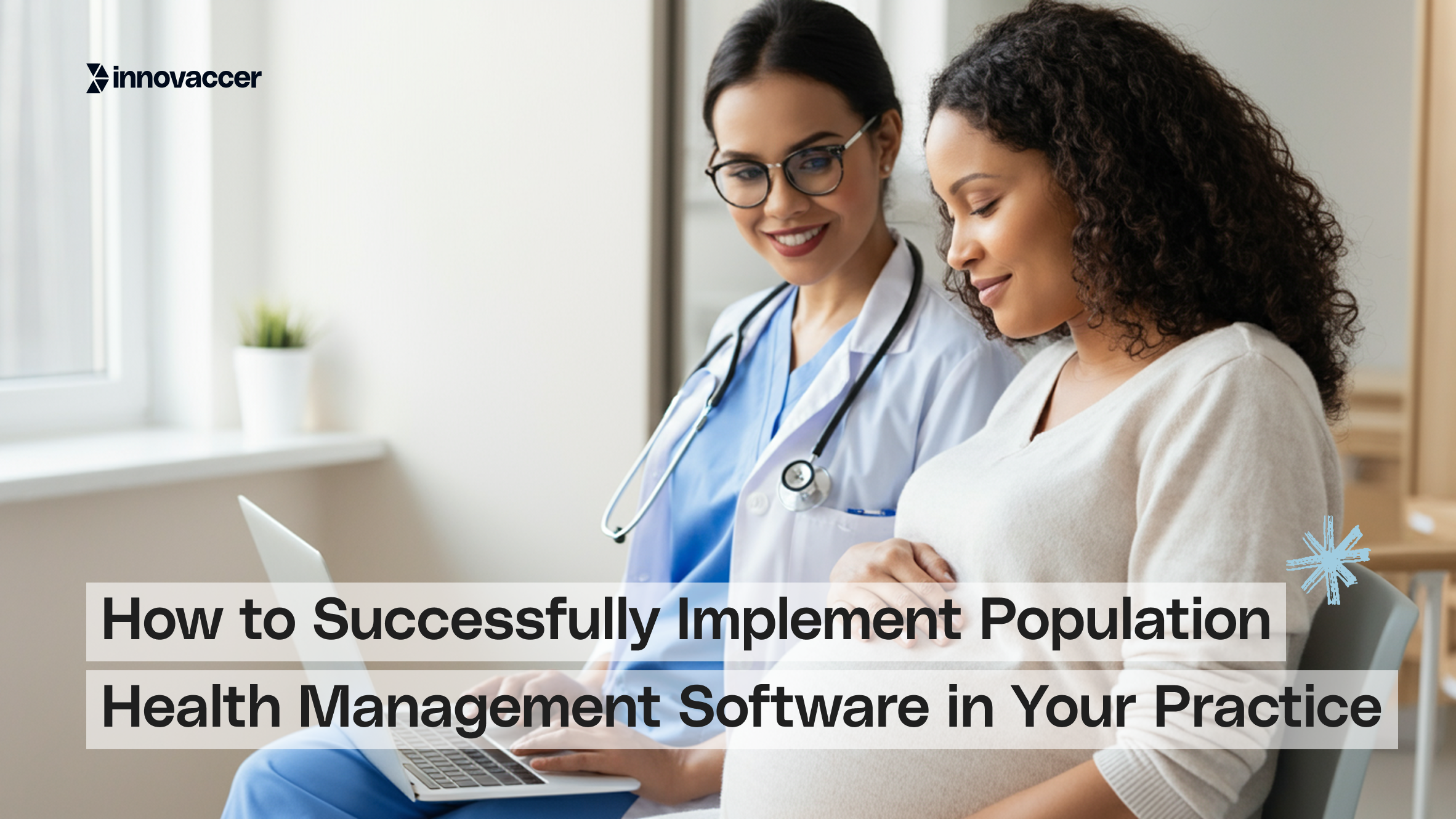
Gone are the days when healthcare providers waited for patients to show up with symptoms. With population health management solutions, care delivery is becoming more predictive and proactive, allowing providers to identify health risks before they become urgent care events. For example, consider a small clinic that identifies a diabetic patient at risk of being hospitalized, not because he complained, but because their population health analytics tool flagged irregular patterns in his lab results and missed appointments. The clinic intervened early and modified his care plan. Thus, a costly ER visit is avoided. That’s the power proactive population health management holds.
PHM software has become essential for building smarter, more efficient care systems. With the global PHM market projected to reach $75.97 billion by 2030, driven by a 10.9% CAGR, PHM solutions are central to achieving measurable improvements in population health and operational efficiency.
However, selecting and implementing the right population health management solution for your organization might not always be easy. With more and more tools and vendors for healthcare organizations to choose from, providers need to select solutions that thread the needle between their organization’s vision and practical needs.
In this blog, we will give you a walkthrough of what PHM software is, its main features, how to select the best population health management software for your needs, and the next steps.
What is the Population Health Management (PHM) Tool?
Designed to collect and analyze data from diverse healthcare data sources, PHM software generates actionable insights for providers, payers, and care teams. You can think of it as a smart assistant that gives you a bird’s-eye view of population health.
Sure, you might think, “Is population health management software worth the investment?” “Can’t traditional methods already give us this kind of information?”.
Not quite. PHM software goes far beyond. It brings speed, scale, and precision, integrating real-time data, applying predictive analytics, and surfacing trends that would be nearly impossible to spot manually. Thus, employing population health tools for medical practices can significantly boost care delivery and patient outcomes.
Core Features of PHM Software
The best population health management software goes beyond merely data collection. Here’s what makes them stand out:
- Predictive analytics: A competent solution not only aggregates data but also analyzes the aggregated data to anticipate future health events, allowing providers to intervene early.
- Risk stratification: By segmenting populations by risk levels, a PHM software allows care teams to prioritize outreach efforts and intervention.
- Care coordination: It also streamlines communication between care teams by centralizing care plans, follow-ups, and patient progress tracking.
- Performance dashboards: Tech-savvy providers will benefit from intuitive dashboards that come with population health management solutions. These allow providers to easily track key metrics like readmission rates or preventive screening, driving data-informed decision-making.
- Patient engagement tools: The tool also facilitates ongoing patient involvement through reminders, secure messaging, and personalized health education.
- Interoperability: To enable data exchange between systems, interoperability is a must-have feature of an excellent population health management solution. This not only reduces data fragmentation but also empowers care teams to make timely, informed decisions.
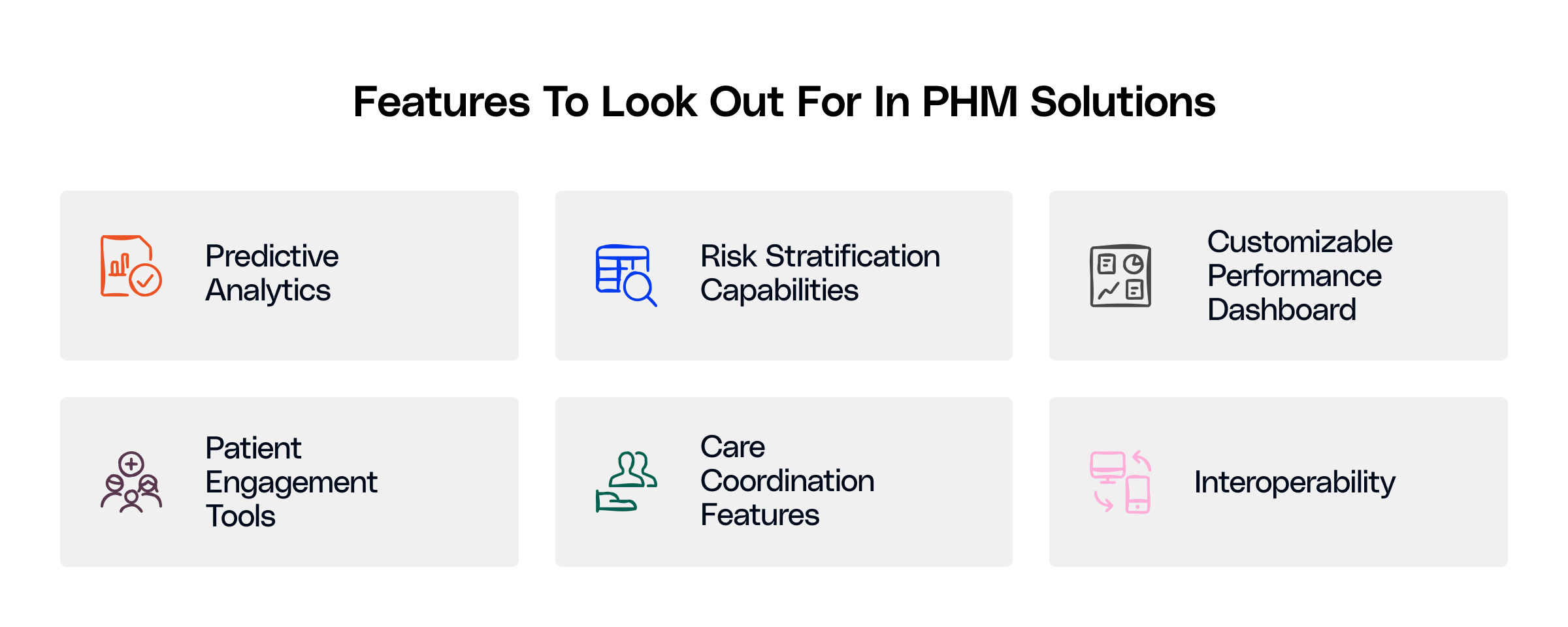
Choosing the Right Population Health Management Solution
Choosing the right PHM vendor for your practice is easier said than done. With so many solutions in the market claiming to be revolutionary, it can be difficult not to get caught in the latest tech trends and overlook the priorities of your organization.
Whether you're a large health system or looking for the best PHM software for small medical practices, focusing on scalability, ease of integration, and vendor support is essential.
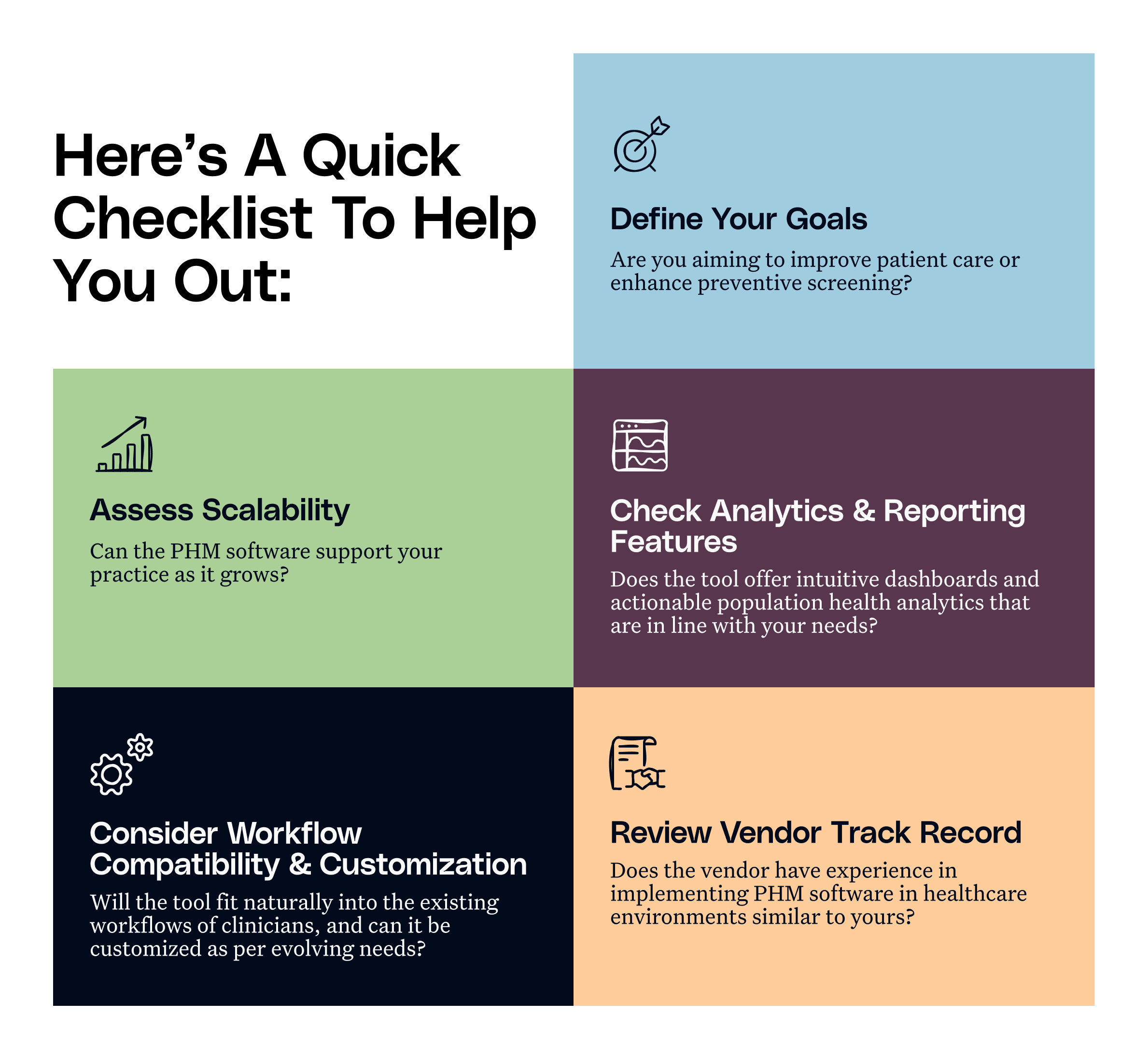
Planning the Implementation Process
Successfully implementing PHM software in healthcare requires more than just installing a tool; it calls for strategic alignment.
The process involves the following steps:
STEP 1: Begin by setting clear goals that align well with your organization’s care delivery priorities.
STEP 2: Identify the teams responsible for clinical operations, IT, and training, and ensure all stakeholders are on the same page.
STEP 3: Start with a pilot rollout to test functionality and help you resolve issues early. A phased implementation approach will minimize disruption and allow for better adoption.
STEP 4: Develop a training plan to familiarize end-users with dashboards and reports.
STEP 5: Implement a feedback loop to address resistance and ensure continuous improvement throughout the rollout.
Ensuring Data Integrity and Quality
Data integrity has become a critical concern in healthcare. For any population health management software to be effective, data must be accurate, timely, and unified. With IT-related incidents accounting for more than 62% of major healthcare breaches, the risk of tampering with data is not just a technical issue but also a patient safety concern. For PHM software to be truly effective, they just rely on clean, standardized data and must comply with existing healthcare regulations. Organizations should collaborate more closely with IT teams to address data silos, duplication, and prevent any lapses that could compromise the integrity of PHM solutions.
Engaging Clinicians and Administrative Teams with PHM Software
Adoption is a key challenge in implementing a population health management solution in healthcare. Clinicians and administrative staff must be brought into the fold early. For instance, one of Innovaccer’s leading partners employed the population health platform to streamline care coordination and risk identification across a large provider network. By demonstrating how the solution simplified previously manual workflows like data aggregation and automating care protocols, staff were motivated to adopt the tool. Showcasing real-time value, such as reduced documentation burden and improved patient tracking, helped providers engage meaningfully and consistently with the population health management tool, ultimately driving better clinical and operational outcomes.
Activating Patient Engagement Through PHM Tools
The benefits of population health analytics do not end at clinical efficiency; rather, they extend to patient empowerment and engagement. Some of the best PHM software for small or large medical practices comes with features such as appointment reminders, patient portals, care plan access, and secure messaging. Thus, prioritizing such solutions is essential to build trust and improve patient adherence, ultimately improving outcomes.
How to Measure ROI of Your PHM Software
Measuring the ROI of your Population Health Management software goes beyond cost; you also need to prove the impact of the solution across clinical, financial, and operational outcomes. According to the HITEQ framework, ROI should be assessed over a period of 3–4 year period through different phases like infrastructure setup, data collection, care model development, and impact analysis.
To evaluate ROI effectively, track:
- Program Costs: Initial and ongoing expenses (e.g., software, staffing, training).
- Utilization Shifts: Reduced ER visits and increased preventive care.
- Claims & Reimbursements: Compare pre- and post-implementation spending.
- Satisfaction Levels: Measure both patient (e.g., CAHPS) and provider engagement.
.png)
Overcoming Common Barriers
The implementation of PHM tools doesn’t come without challenges. Here are some of the common roadblocks your organization needs to be prepared for:
- Data Silos: Fragmented systems complicate access to real-time patient data.
- Limited Interoperability: Difficulty integrating PHM software with existing EHRs and third-party tools.
- Staff Resistance: Staff may be hesitant to adopt new tools
- Lack of Training: Inadequate onboarding and training can delay adoption
- Unclear ROI Metrics: Organizations often struggle to track and communicate the software’s value.
- Misalignment with Workflows: Tools that don't align with daily operations can be disruptive rather than useful.
Thus, to overcome these barriers, organizations must focus on training their staff and implementing solutions that integrate smoothly with existing systems.
Next Steps for Building a Smarter Population Health Strategy
As more and more organizations shift to value-based care, designing the right population health strategy is crucial. It starts with choosing the right population health management software that advances your organization’s goals, supports providers, drives efficiency, and engages patients. The future of healthcare will belong to those who act fast, think smart, and invest in solutions that drive meaningful change.
Ready to see how a population health management solution can drive your VBC goals and improve outcomes? Connect now.

.png)




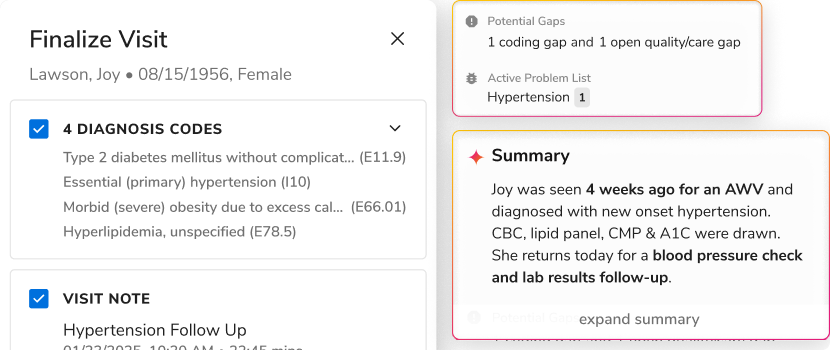
.png)

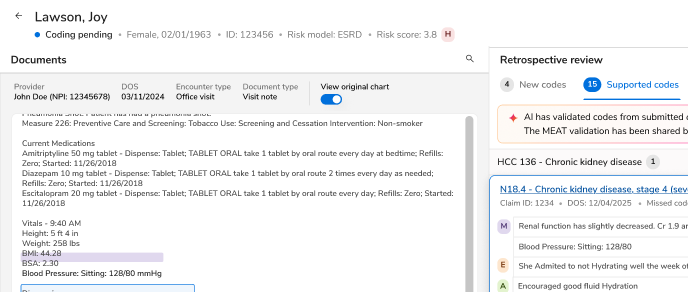
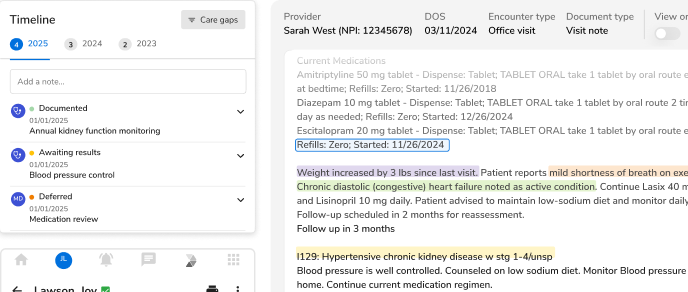
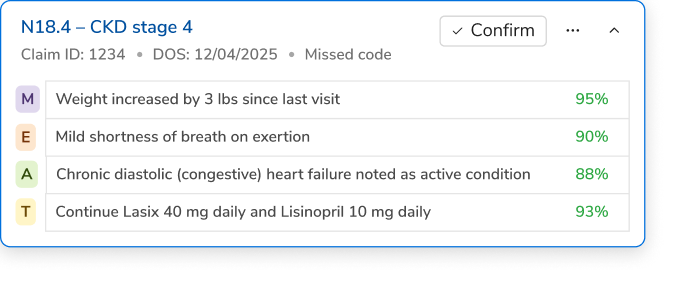





.svg)
.svg)

.svg)

